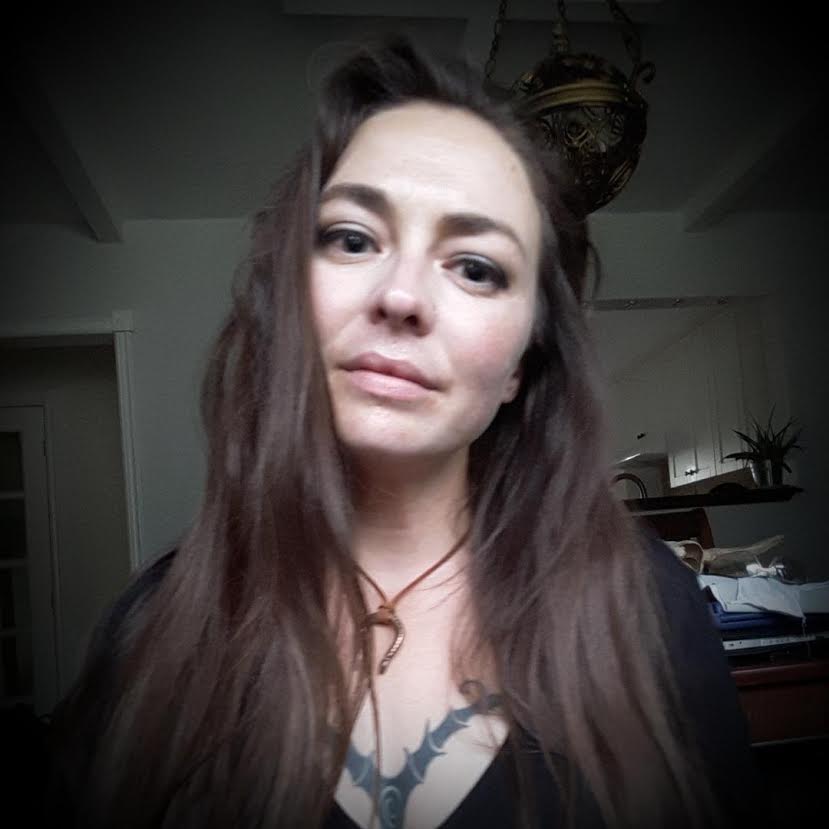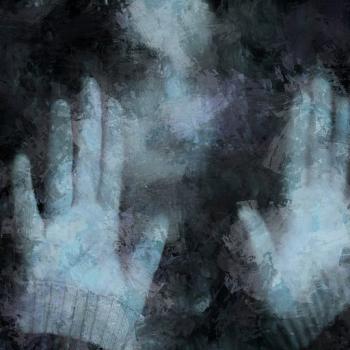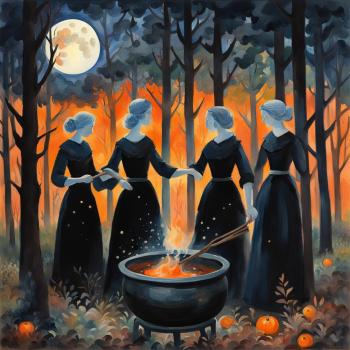Witchcraft and metaphysics are big in pop culture and booming on social media right now. You’ve seen the posts I’m talking about: the beautifully staged crystals in aesthetically pleasing color combinations nestled in the palm of a manicured hand. The sage bundles on a clean white background next to rustic loose leaf teas. The mildew-free bathtub surrounded by rose quartz points with flower petals floating on the water. Just looking at these images makes me feel like I’ve had my chakras aligned. When I first started seeing this content, I was smitten. What a pretty witch aesthetic! And it’s true, these pictures really are pretty. I liked them. I still do.
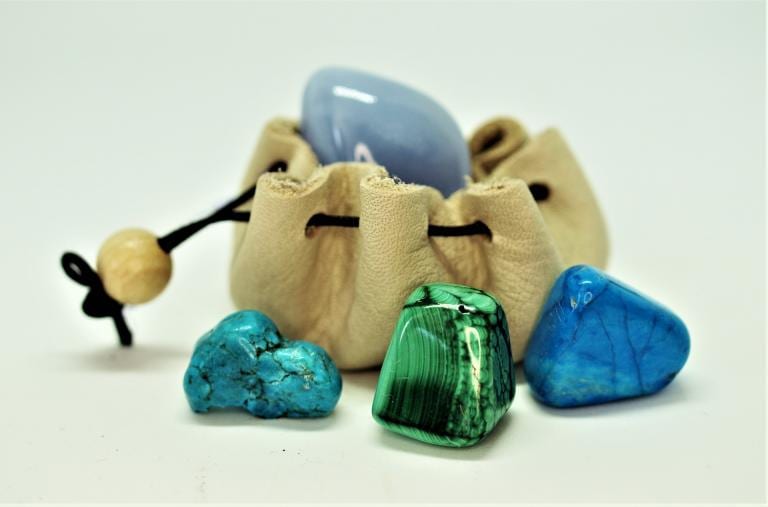
In fact, I’d been enjoying this trend on many levels. If you go to almost any home decor store, you’re sure to find crystal clusters to decorate your living room, coasters made out of agate slices, Palo-Santo sticks for smoke-cleansing your house, healing oil diffusers, even ceramic palmistry hands! I had no qualms with the infamous Sephora witch kit, and I totally own a glass phrenology head from Homesense.
Unlike many people in our community, I wasn’t offended by any of this. Witchcraft has been a trend many times before and it will fade over time again too. I even thought it might normalize ritual in a good way so people won’t think witchcraft is so weird anymore. Being called weird is something I’m getting tired of.
While I find it easy to ignore the odd online troll, dealing with peoples’ judgement regarding witchcraft face to face is harder for some reason, however far more nuanced in its delivery. Even now, when spirituality is so trendy, people are still put off by the word Witchcraft – the same people who are burning sage in their homes and using salt lamps. “What do you do for a living?” gets asked a lot within my demographic, so when asked, I say I have a witchcraft store and that I write about witchcraft and paganism. This triggers a lot of smirks, some weird looks, and awkward silences. It’s not a real job, I’ve been told. “You seriously make money at that?” is a common response.
Eventually I figured out that it’s not my job as a business owner and writer that bothers them, it’s the word “witchcraft”.
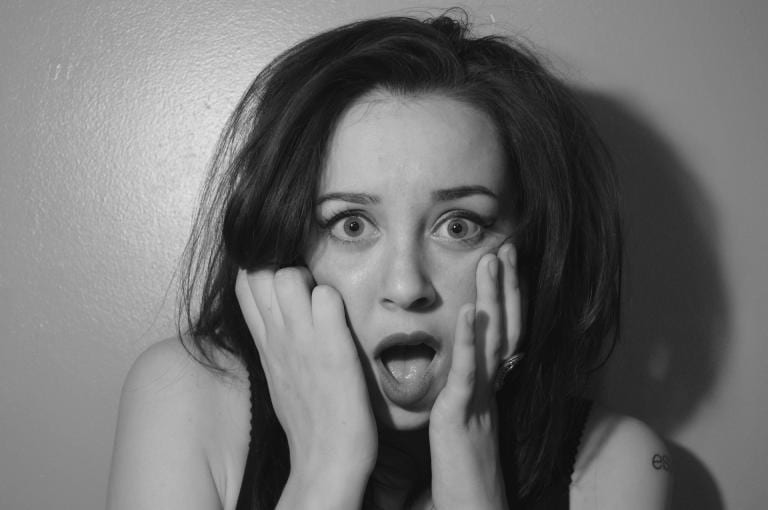
I’ve learned to blend into the background and avoid talking too much about my personal life in social situations because I don’t want the kind of attention it usually brings. I feel judged. Maybe this is all in my head, but you know, it probably isn’t. Sometimes when people ask “What do you do?” it’s because they want to gauge your worth against theirs (not always, but sometimes).The petty ones will use your answer to tell themselves all the reasons they’re superior to you. People think it’s funny that I believe in witchcraft, and some are disrespectful. Some people see my beliefs and livelihood as a weakness, a sign that I lack intelligence or education. Others will launch into a challenging discussion about atheism and how ignorant I am. These things combined are why I don’t talk about what I do unless it’s to people I know are open-minded.
What does this sidetracking rant have to do with the big “self care” thing everyone is doing right now? Well, the whole self care movement, which is partly responsible for all those cool crystals, essential oils and herb-encrusted candles at Walmart, has parallels to witchcraft all over the place, and people just don’t see them. Ritual baths. Meditative journaling. Crystal healing. Essential oils. Aromatherapy bracelets and herbal teas. These are all things that when I first heard of them, I learned through the lens of witchcraft.
A little while ago, I came across an online influencer whose demographic is people my age, who while her brand is completely unrelated to my witchy inclinations, I enjoy her empowering content on body positivity. On the New Year, she wrote out things she’d like to let go of, and burned them outside under the moon in the spotless snow (with perfect angles, of course). This was in keeping with the current spirituality trend. I thought, oh how wonderful, she has tons of followers and is normalizing burning things under the moon! In her comments were all the same type of people I run into in my daily life telling her what a genius idea it was, she was brilliant, how cathartic and what a great idea to try.
I was encouraged by the positive comments. Did this mean the attitudes towards witchcraft are genuinely changing? The fact that thousands of people were showing support for her moon ritual made it seem so. Maybe people would soon be more open-minded about witchcraft!
But they weren’t. Eventually I realized that the difference was this: she didn’t call what she was doing witchcraft, she called it “self care”. It dawned on me that when phrased and presented under the correct trendy term, burning the names of your enemies under the dark moon is socially acceptable. Just make sure to call it self care instead of witchcraft.
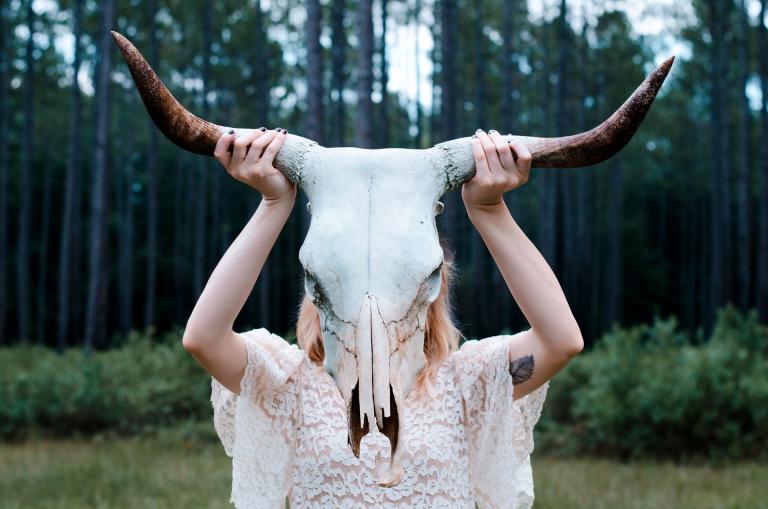
Now that my real name is attached to my business and writing, more people in my circle are finding out what I do in my spiritual life, from my bone collecting, to my rituals and my beliefs. Things that many people still find repulsive and weird, because it hasn’t been packaged into the self-care, yoga retreat, insta-worthy form that is more palatable. Real witchcraft, when all the pretty branding is stripped away, is still just as misunderstood as always.
Maybe I’m over-thinking it and being hypersensitive. Maybe I have a deep seated irrational fear of judgement. Or maybe since I’m not an influencer, no one will call me a genius for ritual, but a freak instead (that’s the norm).
Whatever the reason, a #witchcraft ritual shared on Instagram gets a negative response, but the same exact act is regarded as inspiring and beautiful when called #selfcare ritual.
Upon this realization, the trendiness of crystals and smoke ceremonies started to sour on me. All the strange looks I’ve gotten in person and all the mean comments I’ve received through social media became amplified against the muted rose-tinted filters of the self care movement.
Still, I guess this trend can go one of two ways. One, it normalizes witchcraft and rituals in a way that reduces the stigma around our beliefs. Or two, no one ever realizes that they are in fact doing all the same things as witches and just calling it something different. Either way, the trend will die out and all these cool things will go back in the broom closet until next time.
In the meantime us witches will still be here doing our thing.


